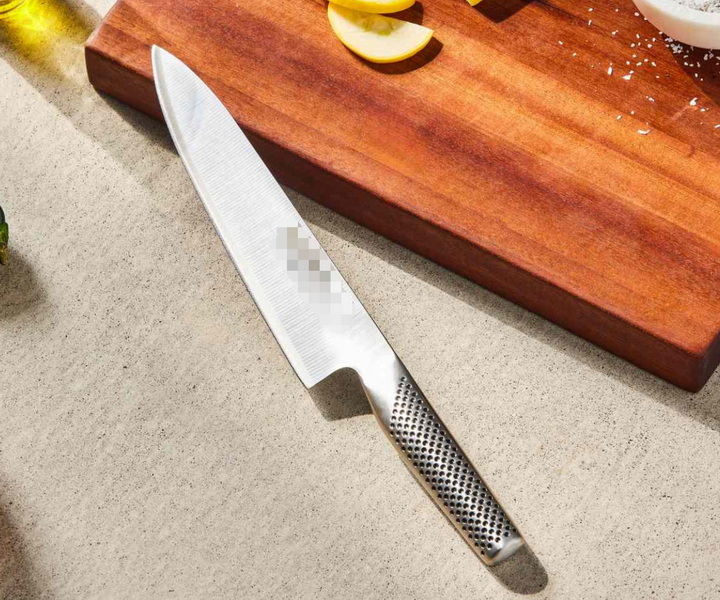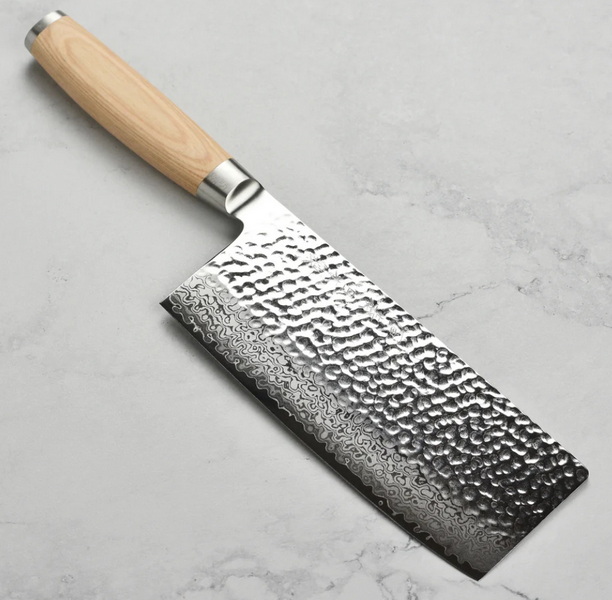Views: 222 Author: Ann Publish Time: 2025-10-13 Origin: Site











Content Menu
● The Growing Global Demand for Butcher Knives
● Why Choose Chinese Butcher Knives?
● Leading Chinese Butcher Knife Manufacturers
>> Yangjiang SAAFI Industry and Trade Co., Ltd.
>> LeeKnives
>> INSIGHT Kitchen Knife Manufacturer
>> Dalstrong (Manufactured in Yangjiang)
>> Turwho
● The Manufacturing Process of Chinese Butcher Knives
● Customization and OEM Services
● Applications of Butcher Knives from China
● Market Trends and Innovation in 2025
● The Role of Technology and Automation
● Frequently Asked Questions (FAQs)
>> Q1: What is the typical minimum order quantity (MOQ) for custom butcher knife orders?
>> Q2: What types of steel are preferred for butcher knives from China?
>> Q3: Can the knife handle material be customized in OEM orders?
>> Q4: How long does it take to produce OEM butcher knives?
>> Q5: Are Chinese butcher knives suitable for export to international markets?
China has long been recognized as a global powerhouse in knife manufacturing, and in recent years, its prominence in the butcher knife segment has dramatically increased. With centuries of traditions combined with cutting-edge technologies, Chinese butcher knife factories have evolved to meet international standards while providing OEM services that allow foreign brands and wholesalers to customize highly functional, durable, and visually appealing butcher knives. This article explores the ongoing rise in Chinese butcher knife manufacturing in 2025, highlighting key trends, the manufacturing process, leading manufacturers, and what brands can expect when partnering with Chinese OEM factories.

The global kitchen knife market, forecast to reach USD 4.8 billion in 2025, has seen a steady increase in demand for high-quality butcher knives. As consumers and professional chefs alike seek reliable knives designed for heavy-duty meat processing, the butcher knife segment has drawn significant attention. Chinese manufacturers, especially those in knife industry hubs like Yangjiang—the knife capital of China—have capitalized on this trend by offering knives that balance traditional craftsmanship and industrial-scale precision manufacturing.
Chinese butcher knives stand out for several reasons:
- Sharpness and Durability: High-carbon stainless steel and Damascus steel are commonly used, creating knives that retain edge sharpness while resisting corrosion.
- Ergonomic Design: Manufacturers focus on handle ergonomics to reduce user fatigue during heavy cutting and chopping.
- Customization: OEM services enable foreign brands to access custom blade shapes, handle materials (such as pakkawood, G10, and injection-molded plastics), branding, and packaging tailored to various markets.
- Competitive Pricing: Chinese factories leverage advanced manufacturing and economies of scale to offer competitive pricing without compromising quality.
Several manufacturers have emerged as leaders in the Chinese butcher knife industry:
Established in 1994, SAAFI is one of the largest butcher knife producers in China. The company combines traditional forging with CNC precision cutting and injection molding to deliver butcher knives known for sharpness, balance, and robustness. With over 120 employees and a monthly output of 20 million knives, SAAFI offers extensive OEM customization options including private labels and bespoke packaging.
Founded in 1993, LeeKnives specializes in flexible OEM production with customizable blades and handles. Their butcher knives are well-regarded for premium steel quality and ergonomic designs suitable for professional and home use.
With a large factory footprint in Yangjiang, INSIGHT produces diverse butcher knives with high-carbon stainless steel blades and full-tang ergonomic handles. Their blend of modern machinery and traditional forging achieves knives with excellent sharpness and comfort.
Dalstrong is a premium brand known for superior butcher knives featuring Damascus steel blades with intricate layered patterns, aimed at professional chefs and gourmet home cooks alike.
Specializing in Japanese-style butcher knives, Turwho uses high-quality Damascus steel and pakkawood handles, offering small to mid-batch OEM services for clients emphasizing craftsmanship and exclusivity.

The production of high-quality butcher knives in China involves both traditional blacksmith techniques and modern industrial processes. A typical manufacturing workflow includes:
- Blade Blanking and Laser Cutting: Stainless steel plates are precisely laser-cut into blade shapes.
- Annealing and Heat Treatment: The blades undergo heat treatment to relieve stress and enhance hardness without brittleness; some methods include oil cooling and special cement quenching to optimize toughness and edge retention.
- Grinding and Polishing: Multiple stages of grinding remove burrs, polish the blade surface, and refine the edge using grinding wheels and water stones, combined with manual water grinding by skilled workers.
- Handle Preparation and Assembly: Handles are either injection-molded plastic or hand-polished wood or pakkawood, with glue filling gaps between blade and handle for durability. The handles go through multiple polishing stages under controlled temperature and humidity to prevent deformation.
- Quality Control and Testing: Knives are tested for sharpness, hardness (using devices like hardness testers), corrosion resistance, and mechanical stress. Final inspections ensure defect-free products, ready for packaging.
This blend of automation and craftsmanship enables Chinese manufacturers to maintain high standards while scaling up production effectively.
OEM services are a major strength of Chinese butcher knife factories. These services allow foreign brands to:
- Personalize blade shapes and thickness tailored to butchering styles.
- Choose handle materials and designs for ergonomic comfort and aesthetics.
- Add laser-engraved logos, etching, and custom blade graphics.
- Design exclusive packaging that tells brand stories.
- Flexibly order from small startup quantities (~100 pieces) to large volumes.
Many factories also accommodate preferences for blade hardness, edge angle, and handle material selection, enabling products to be tailored for specific regional markets globally.
Chinese butcher knives have a broad range of applications, including but not limited to:
- Professional butcher shops and meat processing plants.
- Commercial kitchens in hotels, restaurants, and catering services.
- Home kitchens for culinary enthusiasts who prefer durable, sharp knives.
- Food markets requiring reliable cutting tools for meat and poultry.
- Specialty markets such as halal butchery, adapting knife designs for regional culinary needs.
In 2025, Chinese butcher knife manufacturing is marked by several innovations:
- Use of advanced steel alloys and Damascus patterns for strength and aesthetics.
- Introduction of ergonomic handle materials like composites and sustainable woods.
- Quality control improvements with automated CNC machines and heat treatment lines.
- Some factories experimenting with smart knife technologies that monitor sharpness and cutting activity.
- Increasing focus on sustainable materials and eco-friendly packaging.
These innovations aim to sustain China's dominance in the butcher knife sector, appealing to global markets with high standards.
Chinese butcher knife manufacturers continue to invest heavily in technology upgrades such as robotic polishing machines, laser engraving systems, and precision heat treatment furnaces. These technologies help reduce human error, improve consistency, and speed up production. Automated quality inspection systems powered by machine vision ensure every butcher knife meets international standards before reaching customers.
In addition, advancements in metallurgy and material science guide the development of specialized alloys that enhance edge retention and corrosion resistance without the need for frequent sharpening. This results in butcher knives that deliver longer working life and greater value for end users.
As global consumers become more environmentally conscious, many Chinese manufacturers increasingly adopt sustainable and eco-friendly practices. This includes sourcing responsibly harvested woods or recycled materials for handles, minimizing waste in manufacturing, and designing recyclable or biodegradable packaging. These efforts not only reduce environmental impact but also add marketing appeal for green-focused brands worldwide.
Chinese butcher knife manufacturing has risen impressively to become a dominant force in the global market due to a unique blend of tradition, craftsmanship, and advanced manufacturing capabilities. Leading manufacturers like Yangjiang SAAFI, LeeKnives, and Dalstrong demonstrate the ability to deliver top-quality butcher knives with extensive OEM customization options. For foreign brands, partnering with Chinese OEM factories offers competitive pricing alongside premium quality, making Chinese butcher knives an excellent choice for professional chefs, wholesalers, and retailers worldwide.
The continued innovation and strong industry infrastructure suggest that the future of Chinese butcher knife manufacturing will be characterized by enhanced quality, smarter designs, and a growing international footprint.

A: MOQs usually range from 100 to 500 pieces depending on the complexity of customization and factory policy.
A: High-carbon stainless steel and Damascus steel are most popular for their sharpness, durability, and corrosion resistance.
A: Yes, handle materials including wood, pakkawood, G10, resin, and injection-molded plastics are commonly offered based on client preferences.
A: Production lead time typically ranges from 30 to 60 days depending on order size and customization details.
A: Absolutely, Chinese manufacturers comply with international quality and safety standards and export globally.
The Ultimate Professional Knives for Halal Butchery in Middle Eastern Kitchens
Chef Knife Size Guide: Choosing Between 6″, 8″, 10″, And 12″
Custom Knife Handles: How To Design A Chef Knife That Fits Your Hand Perfectly
Chef Knife Surface Treatments Guide: From Polished Migaki To Damascus Patterns
Inside Our Professional Knife Sample Room: Quality You Can See
Universal Knife Block Buying Guide: Modern Acrylic & ABS Knife Holders for Professional Kitchens
Universal Knife Block: The Complete Guide To Modern, Hygienic Knife Storage
The Complete Guide To Red Handle Knife Sets: Style Meets Functionality in The Kitchen
Professional Knives for Halal Butchery And Middle Eastern Cuisine